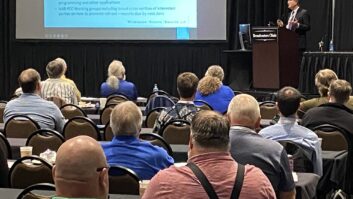In the third forum on indecency held by the Senate Commerce Committee, Bonneville President/CEO and NAB Joint Chairman Bruce Reese testified “as several committee members acknowledged at the November forum, very real First Amendment issues are at stake when Congress considers venturing into content regulation.”
Points to remember, he said are that the majority of broadcasters have never been cited by the FCC for airing indecent material
In 2002, only 8 of more than 15,000 stations received a Notice of Apparent Liability from the FCC for airing indecent content and in 2003, the number was 15, he stated.
While in 2004, the number was up to 208 stations and 189 of those notices could be attributed to two programs.
In 2005, not a single station was cited for an indecency violation.
Overwhelmingly, he said, local broadcasters err on the side of caution when making content decisions.
“There are differences between those who have a live slip-up after taking reasonable precautions… and those who purposefully push the envelope,” Reese said as he urged lawmakers to take into consideration that the audience today doesn’t always distinguish between cable TV, satellite, TV and radio and free over-the-air media. While subscription media is not regulated by the FCC for indecency, traditional media is, he said.
“The argument that the ubiquitous nature of broadcasting justifies singling out broadcasters as second-class citizens with regards to the First Amendment…simply doesn’t make sense today.”
Proposals requiring license revocation proceedings are especially troublesome.
In that vein, NAB has collaborated with other stakeholders to develop a plan to educate the public about the V-Chip and other blocking technologies.
The Ad Council has been enlisted to create educational messages that will give parents simple instructions for use of the V-Chip as well as satellite and cable blocking mechanisms, he said.
Reese: Most Broadcasters Not Cited for Indecency
Reese: Most Broadcasters Not Cited for Indecency












